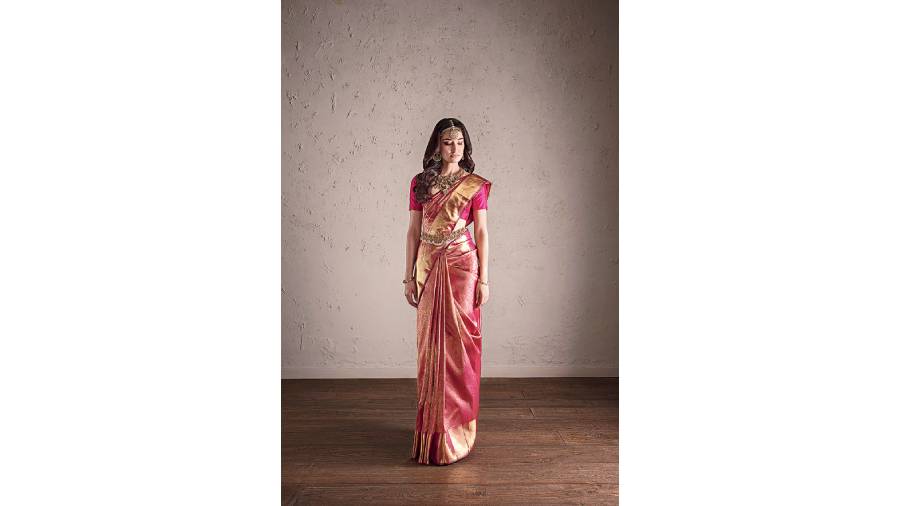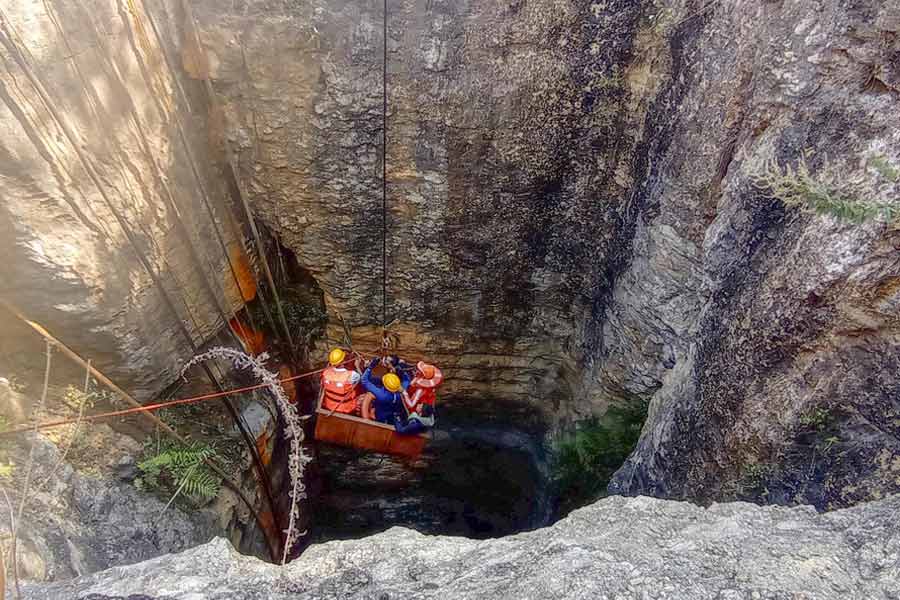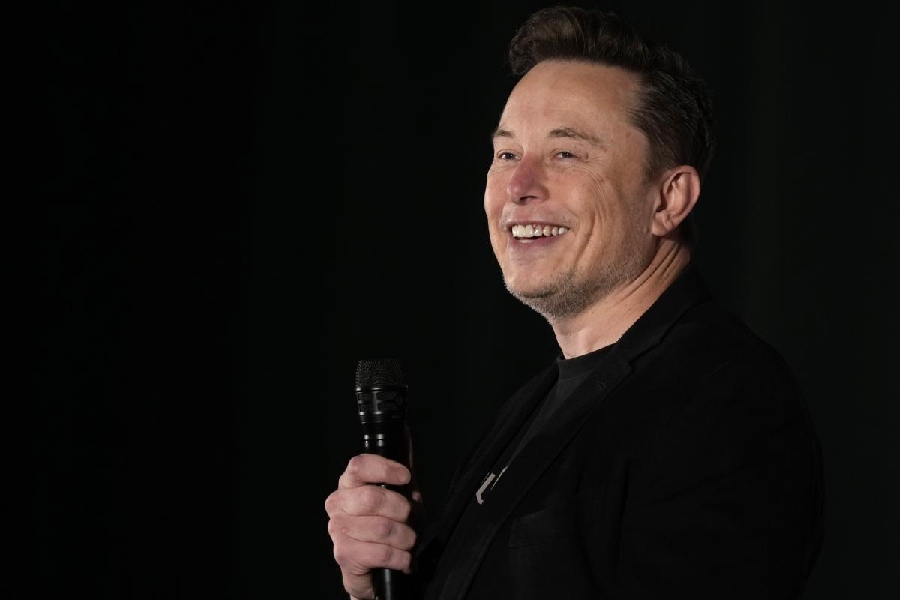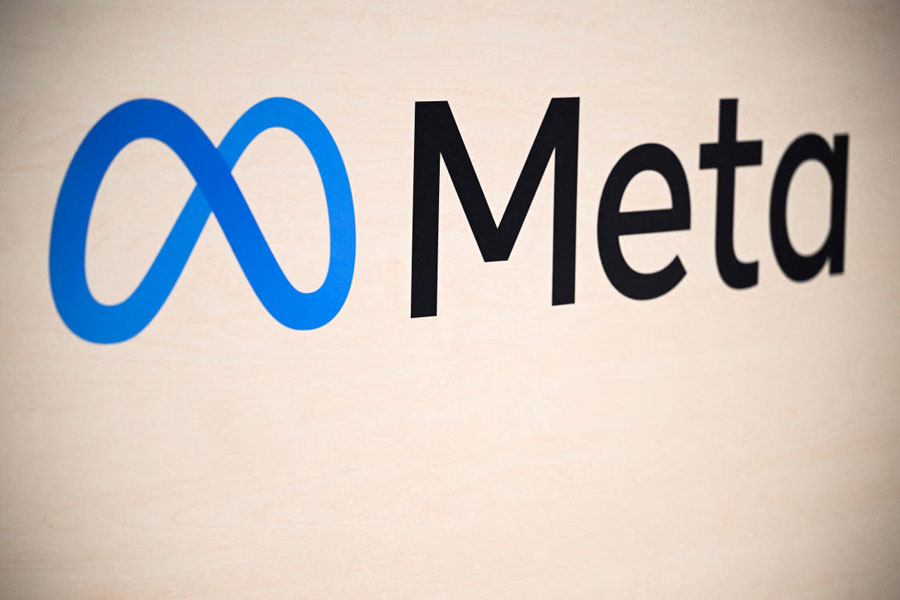There is nothing new about the timeless Kanjeevaram. Chances are that your mother has at least one and maybe even your grandmother. Simply put, every warp and weft of a Kanjeevaram encloses thousands of years of legacy that was born in the weaving village of Kanchipuram, Tamil Nadu. Incidentally, this age-old traditional weave of India has been getting infused with tensile strength in the form of a tactile dose of modernism in the hands of Bangalore-based design label Advaya. And on the occasion of the label’s 10th anniversary, K.H. Radharaman, founder, CEO and principal designer, House of Angadi, and creative director, Advaya, showed us how.
“I am a traditionalist but also a modernist. I revere tradition but I am a modernist in my outlook. I think tradition, craft and culture are all relevant only through contemporisation. What I do is not revival because to a certain extent, that implies that things have been kept the way they were and this is not what that is. This is rejuvenation. I think of myself as a design innovator and that is my foremost job. The rest of it is incidental,” said Radharaman at the end of a recent three-day trip to Bangalore and Kanchipuram as he took us through the label’s end-to-end process of designing. It is key to know that innovation and modernisation are nothing new for Radharaman as his father R.K. Raman was the one behind modernising the 600-year-old family business of Angadi into “the first fully-integrated handloom weaving facility for silk in India”. And Radharaman’s intervention in textile and design has now become the begetter of premium handcrafted and artisanal iterations of the Kanjeevaram in linen, khadi and even organza.
Our trip commenced with a visit to Angadi Galleria in Sadashivnagar (Bangalore) where Radharaman expertly introduced us to the history of the Kanjeevaram and then familiarised us with Advaya, as tradition and modernism played out in harmony with the unfurling of one exquisite sari after another. Traditionally, the Kanjeevaram is a sari that is usually handwoven in mulberry silk and has pure gold or silver zari that renders it a festive quality and makes it a must in every wedding trousseau down south. Kanchipuram has seen patronages through dynasties such as the Cholas and the Pallavas and most of its motifs till date are inspired by the famous temple architecture of the region. One can spot motifs such as the mythical creature called the Yali (an elephant-lion fusion), the Ganda Berunda (a two-headed majestic mythical bird) and the ubiquitous temple border called reku. A subsequent visit to the Varadaraja Perumal Temple in Kanchipuram served as a living testament to the mood board of the Kanjeevaram’s historical motifs. Interestingly, Radharaman through his in-house design process and team of weavers have managed the formidable task of giving this formal design language a new accent by translating them on to weaves such as linen and khadi.
The process, I imagined, could not have been easy and our visit to Advaya’s textile studio and looms confirmed that. At the textile studio that is tucked inside a quiet lane in Jayanagar (Bangalore), we saw the process of designing from conceptualisation, creation and then its conversion to a Cad (computer-aided design) file — all of it more painstaking that what this description might suggest. The designs that are devised as agnostic to technique and material are then incorporated into punch cards according to each design’s specific needs, type of loom and the technique required that finally translate the design onto the textile. Technical innovation also goes hand in hand and the more recent introduction of the jacquard loom is one such instance.
Handmade in limited numbers — “only 12-15 pieces of a single design are made every year” — each is a sheer labour of love and we got a taste of that when we later visited two houses of weavers in Kanchipuram and saw them hard at work. A weaver-couple sat at the loom at one of the houses as they implemented the Korvai technique that needs two people to operate the shuttle in tandem to interweave the body, pallu and border at one house, before they got up to give each of us a tilak on our foreheads as a mark of welcome to their sacred place of weaving.
“Our process is that of a very slow burn. We have been building Advaya with a very conscious effort to not overreach because it is very easy for us to just have five stores in the country. But the moment you do that without the requisite back-end to support it, things fall apart because what we do requires a lot of attention to detail and foundation-building, which we have done. Now we are ready to go forward and expand the market. We have been able to industrialise handloom to a great degree and what you saw is a small example of that,” explained Radharaman about why Advaya has kept a relatively low profile in the media landscape until now.
While the traditional Kanjeevaram remains a timeless treasure, what Radharaman has done is an example of contemporising it for those who are looking for something lighter and modern.
So, when we see glimpses from Advaya in a mix of stunning colours and lighter weaves, the popularity of the diaphanous linen and organza Kanjeevarams that are a genius combination of muted finesse is not surprising. And most famously, Deepika Padukone also seemed to agree as it is this label’s creation that she had donned for one of her wedding rituals in 2018. Advaya’s saris are priced between Rs 20,000 and Rs 2.50 lakh or more depending on the degree of detailing, and counts many a modern-day bride as its wearer. Radharaman’s intervention can be seen in, say, how he has contemporised the humble kantha stitch on tussore, the Benarasi Khadua georgette or how he alters the composition of fabrics to incorporate the tradition of the Kanjeevaram, yet in a modern-day avatar as he continues to “work with every state except Goa” in his journey of innovation.
However, a design intervention into a traditional craft cannot be easy, I imagine. But for Radharaman, the challenges are not the usual ones as he has built Advaya to be an end-to-end design label, which means that he would have to bear the brunt of it, if there were any setbacks. “In our case, most of the innovation is done in a way that we are the final owners of the entire infrastructure and the final owners of the raw material. So the risk is not on the weaver but it’s on me. Yes, I need to find a person with the skill set to execute on ground and that requires some amount of effort. It takes some hard work to get people to do something that is difficult. We have different sets of weavers for every type of textile. That is why even grooming the right kind of skill set and incentivising them become so important and we groom them to do the difficult things from a labour point of view by incentivising them monetarily,” said Radharaman.
An engineer by profession and a self-taught textile designer, Radharaman says that his biggest challenge is visualising a design. “Design is a discipline. Taking inspiration and creating something is so easy but that is not design. So for me the biggest challenge is that the thought has to come and if I can think it, I can translate it into an end product. Therefore it is a tedious, time-consuming process and a labour of love. I have industrialised handloom but I have not industrialised or commodified design,” he said.
It is also important to note that Radharaman means business. During our visit to the four-storey Angadi Heritage at Jayanagar, which is a multi-designer affair, the distinct difference in the diction of each of his labels is quite pronounced and appeals to a wide audience. While Angadi deals in the traditional heritage of Kanjeevarams with Radharaman not necessarily producing all of the saris, Advaya is cut out to be more niche with all of it made in-house. “We don’t do seasonal collections. There is a pipeline of designs that are always coming out of the studio and that pipeline is usually a two-year one so if I decided to put out 50 things next season, I can. At any given point of time, I have only close to 1,000 individual designs in circulation. My design team has eight textile designers, four apparel designers who are shared resources between our other label. We have close to 800 artisans on ground and growing,” he said while talking numbers for Advaya. More recently, Radharaman’s pret label Alamelu has started tapping into the contemporary-wear segment.
The 10-year milestone now under his belt, what’s next for Advaya? “We have to go out and create our space in every city in a meaningful way and that will happen in the next five years. Advaya, for me, will be the vanguard of Indian textiles and craft and we see the Indian market making it more than viable. I think India is ready to hit the pause button on what was and they are ready to explore a different direction,” Radharaman concludes.
Pictures: Advaya & Anannya Sarkar
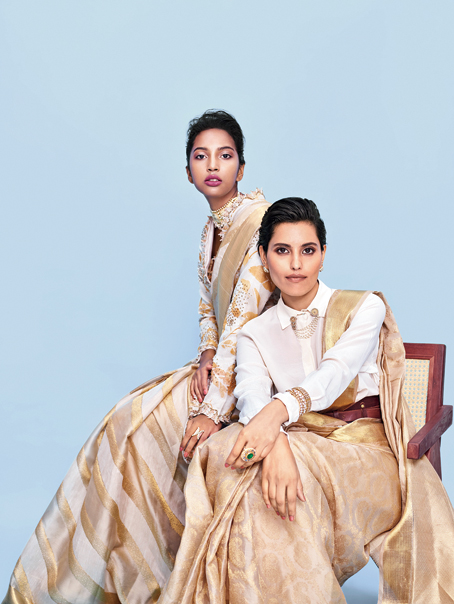
A linen Kanjeevaram (left) and an organza Kanjeevaram
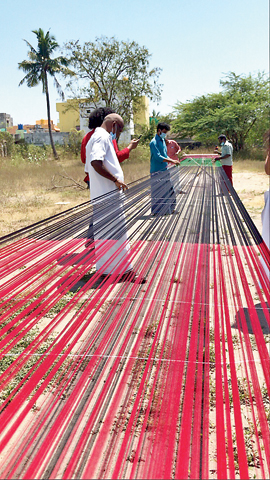
Yarns drying in the sun

Weaver-couple Muthuvel and Kalaivani weaving a new sari using the Korvai technique
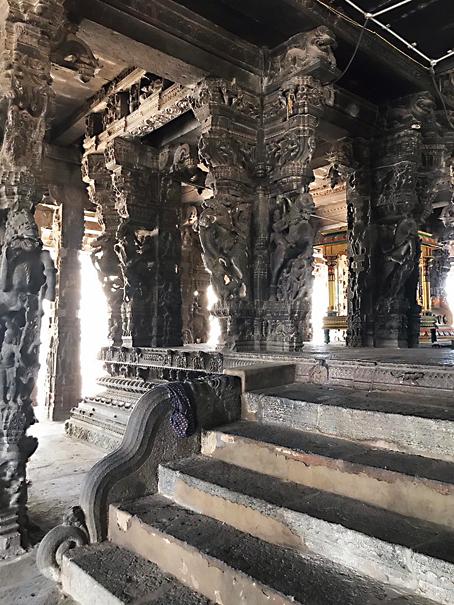
The temple architecture of south India and especially around Kanchipuram has historically served as a mood board for design inspiration for the traditional Kanjeevaram motifs. Seen here are glimpses from the Varadaraja Perumal Temple in Kanchipuram where motifs such as the Yali (an elephant-lion fusion), the Ganda Berunda (a two-headed majestic mythical bird) and the ubiquitous temple border called reku can be spotted
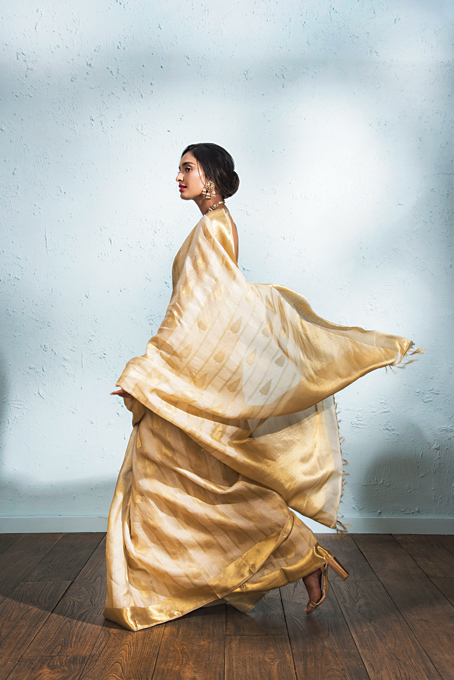
Linen Kanjeevaram
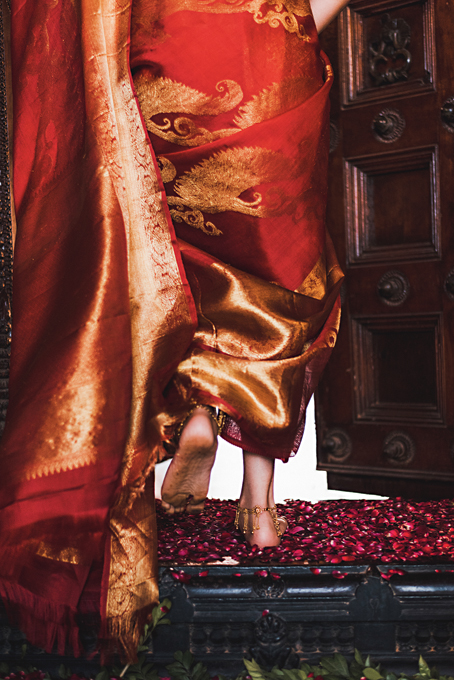
A design from Advaya’s latest campaign

